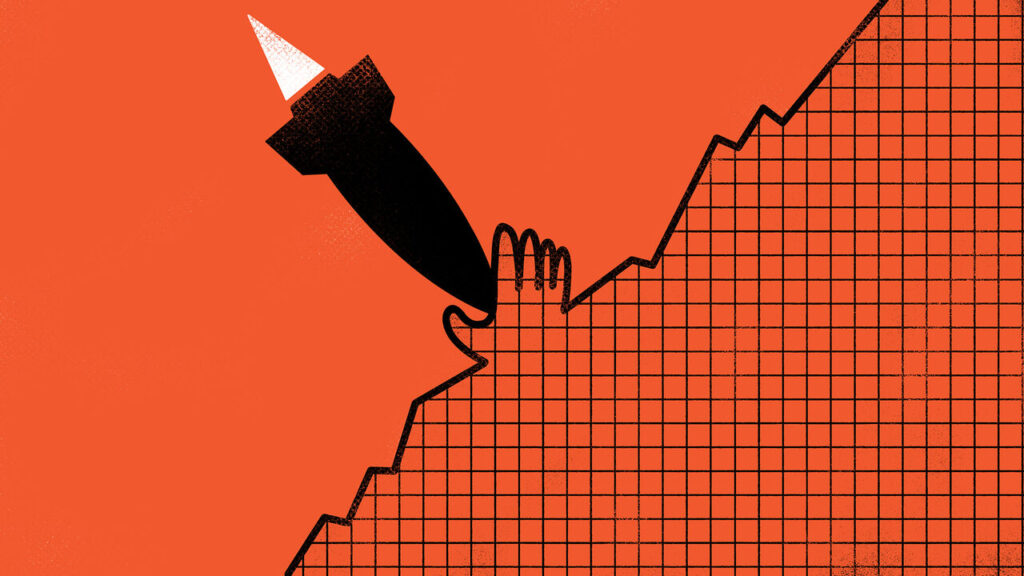The Nothing Ever Happens Market, often referred to in casual discussions about economic stagnation, is a conceptual landscape where progress appears halted and innovation is absent. This metaphorical market embodies scenarios where individuals and businesses find themselves stuck in a cycle of inactivity, characterized by a lack of meaningful transactions and engagements. Understanding the dynamics within this market can provide insights into broader economic trends and human behavior.
At its core, the Nothing Ever Happens Market reflects a state of economic paralysis. This condition may arise due to various factors, including regulatory burdens, societal apathy, or technological stagnation. When consumers and producers alike harbor doubts or concerns about the future, they may choose to withhold spending and investment. This behavior leads to a self-perpetuating cycle: with reduced consumption, businesses experience lower revenues, which in turn may lead to layoffs and further decrease in spending power. The result is a stagnant economy where opportunities for growth and dynamism seem nonexistent.
Regional examples can illustrate the impact of this market dynamic. For instance, certain areas may find themselves trapped in this state due to industrial decline or the exit of large employers. Cities once thriving with commerce may become ghost towns as businesses shutter, leaving an air of desolation. In such regions, the lack of investment can frustrate efforts to revitalize the local economy. Initiatives aimed at attracting startups or stimulating small businesses often falter, as a profound sense of resignation permeates the community. The cycle perpetuates, making it difficult for any progressive change to take root.
In behavioral economics, the phenomena associated with the Nothing Ever Happens Market can also be seen through the lens of psychological factors. Human beings are naturally inclined to respond to perceived risks, which can lead to a collective aversion towards taking action. This may be aggravated by narratives from media, policymakers, and influencers that emphasize uncertainty and pessimism, further entrenching the mentality of inaction. When narratives dominate public discourse that reinforce the idea that “nothing ever happens,” it can lead to a broader cultural acceptance of mediocrity, stifling aspirations and entrepreneurial spirit.
Conversely, the potential for change exists if stakeholders can break free from the constraints of the Nothing Ever Happens Market. Understanding the underlying issues—whether they are economic, social, or psychological—can pave the way for revitalization efforts. Governments and organizations can implement targeted economic policies aimed at encouraging investment, such as tax incentives for businesses that choose to set up in stagnant areas or grants for innovative startups. By fostering collaboration among community members and encouraging participation in local governance, a sense of agency can be restored.
Similarly, narrative plays a vital role in how communities view their situations. By showcasing success stories, highlighting resilience, and celebrating even small victories, communities can cultivate a more optimistic outlook. Engaging in social activities, networking events, and local forums can help to dispel the notion of inactivity and create a ripple effect of empowerment. The emergence of grassroots movements can provide the momentum needed to challenge the status quo and inspire engagement across various sectors.
Educational institutions and organizations can also contribute to combating the Nothing Ever Happens Market. By providing resources for workforce development, retraining, and entrepreneurial education, they can equip individuals with the skills and mindset needed to thrive, fostering an environment where innovation is welcomed and celebrated. Initiatives that encourage collaboration between different sectors, such as tech, education, and non-profits, can facilitate knowledge sharing and support the emergence of new ideas.
In conclusion, the Nothing Ever Happens Market symbolizes a stagnation that can persist due to a mixture of economic conditions and cultural narratives. However, by acknowledging its existence and implementing strategies to counteract the apathy it breeds, communities and economies have the potential to transform. Facilitating investment, promoting positive narratives, and providing educational opportunities can catalyze progress, ultimately enabling individuals and communities to break free from the grip of stagnation. The journey toward revitalization is not merely an economic endeavor but a holistic commitment to fostering hope and potential in a world that sometimes seems to have forgotten how to move forward.



